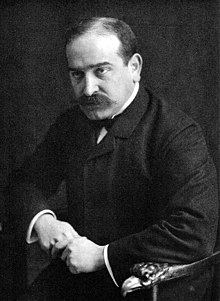Max Warburg
Max Warburg | |
|---|---|
 Max Warburg in 1904 | |
| Born | Max Moritz Warburg June 5, 1867 |
| Died | December 26, 1946 (aged 79) |
| Occupation | Banker |
| Spouse |
Alice Magnus (m. 1899) |
| Children | Eric Warburg (1900–1990) |
Max Moritz Warburg (5 June 1867 – 26 December 1946) was a German-Jewish banker and scion of the wealthy Warburg family based in Hamburg, Germany.
Early life
Max Warburg was one of seven children born to Moritz Warburg, the director of the family's Hamburg bank, and his wife Charlotte Oppenheim of the Oppenheim family, another prominent German-Jewish banking family.
His siblings were the art historian and cultural theorist, Abraham Warburg; the chief architect of the Federal Reserve Board of the United States Paul Warburg; Felix; Olga; Fritz; and Louisa.
Career
He apprenticed in Frankfurt, Amsterdam, Paris, and London. From 1910 until 1938, he was director of M. M. Warburg & Co. in Hamburg, Germany. As head of that firm, he advised Kaiser Wilhelm II prior to World War I.
In the 1930s, despite the rise of the Nazi Party, Warburg felt there was hope for the future in Germany and tried to wait out the Nazi crisis. From 1933, he served on the board of the German Reichsbank under governor Hjalmar Schacht. He sold the bank because the 1935 Nuremberg laws set the framework and campaign of Aryanization. He then emigrated to the United States in 1938.
Personal life
Max Warburg married Alice Magnus in 1899, and together they had four daughters (including Lola Helene Nina Hahn-Warburg, who instigated the Kindertransport initiative to the United Kingdom) and a son, Eric Warburg (1900–1990), founder of E.M. Warburg & Co, later known as Warburg Pincus.
See also
References
- Berghoff, Hartmut; Köhler, Ingo (2007). "Redesigning a Class of Its Own: Social and Human Capital Formation in the German Banking Elite, 1870–1990". Financial History Review. 14 (1): 63–87. doi:10.1017/S0968565007000364.
External links
